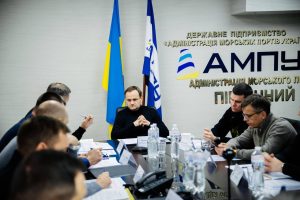In search of margins: the path of Ukrainian grain in 2025

Insights from the main grain conference Grain Ukraine
Ukrainian agricultural producers have been working in conditions of full-scale war for the fourth year. They are adapting to the new reality — missile attacks, complex logistics, climate change, staff shortages, and transformations in global trade. Despite all the challenges, the agricultural sector remains critically important for the economy: it maintains exports, provides foreign exchange earnings, and supports employment.
How to maintain margins in such conditions? Where to look for growth points in 2025? The participants of the 10th anniversary Grain Ukraine conference, which took place on May 29–30 in Kyiv, sought answers to these questions. We have collected the main insights for you.
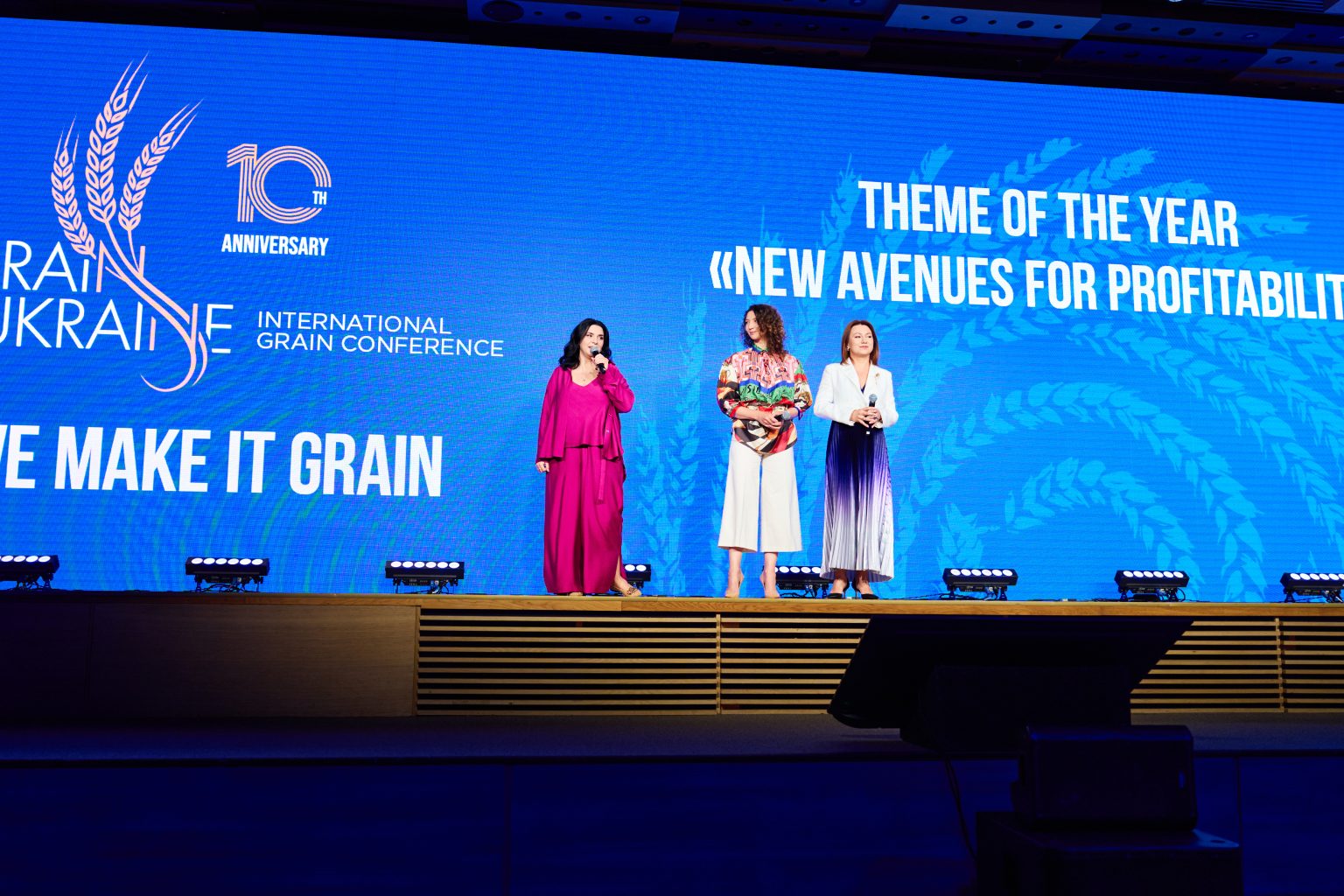
“The Ukrainian agricultural sector remains a key engine of foreign trade. Grain kept us afloat and helped preserve the collectives of not only farmers, but also companies that worked in metallurgy and logistics before the war,” Andriy Stavnitser, founder of Grain Ukraine, co-owner and CEO of TIS Port, and initiator of the Superhumans project, noted in his opening remarks. Our country exports 100% of its crop surpluses, and farmers under missile and drone attacks contribute to global food security. The entire agricultural market of Ukraine is about constant challenges, restructuring processes, flexibility and resilience, which allow us to look to the future and move the economy forward.
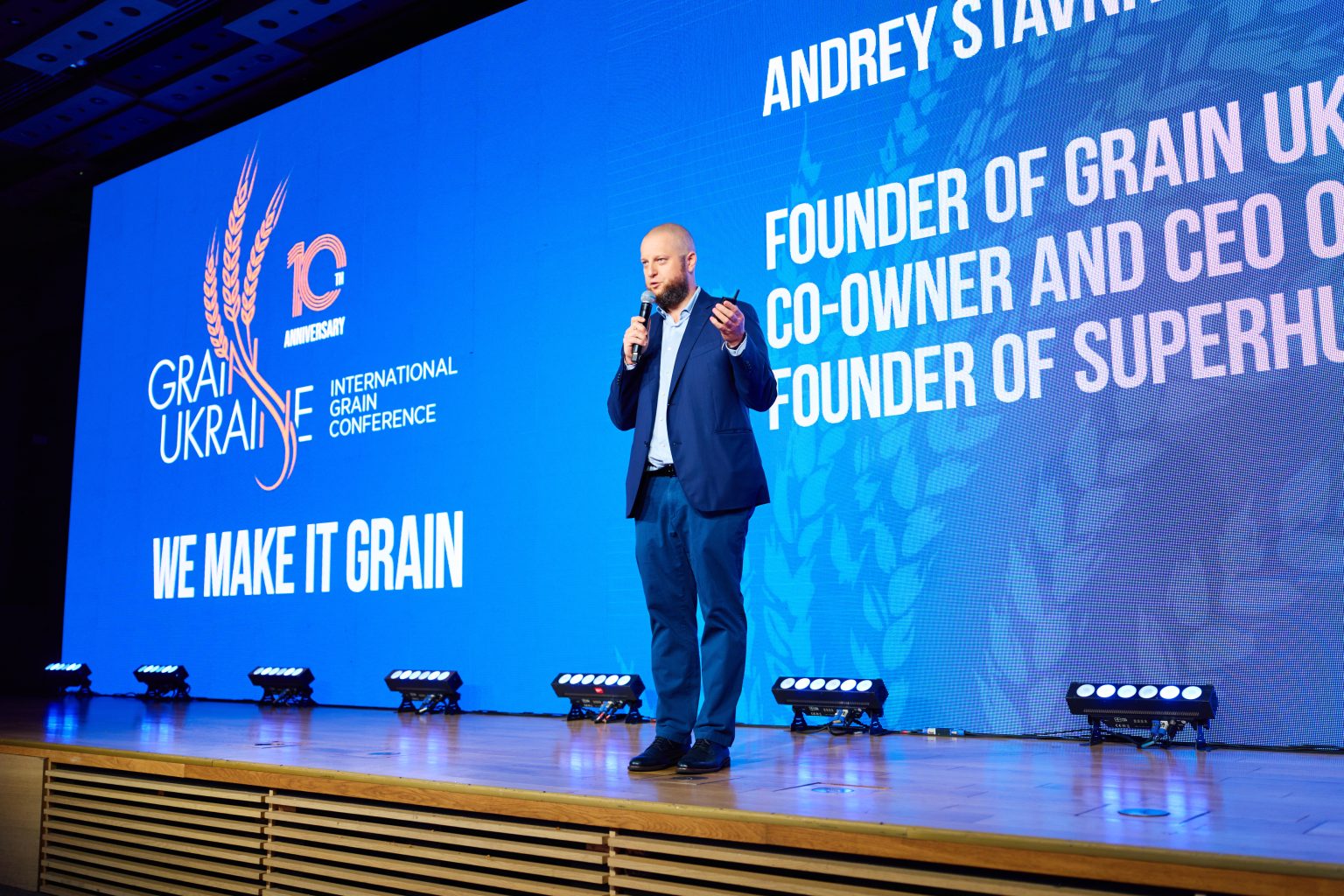
Cultivation under threat
Petr Krogman, owner of Agromino and president of the Ukrainian-Czech Chamber of Commerce, spoke about the difficulties at the start of the season. “In some areas of the Kharkiv region, there was no sowing at all this year. We at Agromino have reduced the sowing area to 6 thousand hectares. If there is no support, these regions may be lost for both agricultural production and investment in general,” he emphasized.
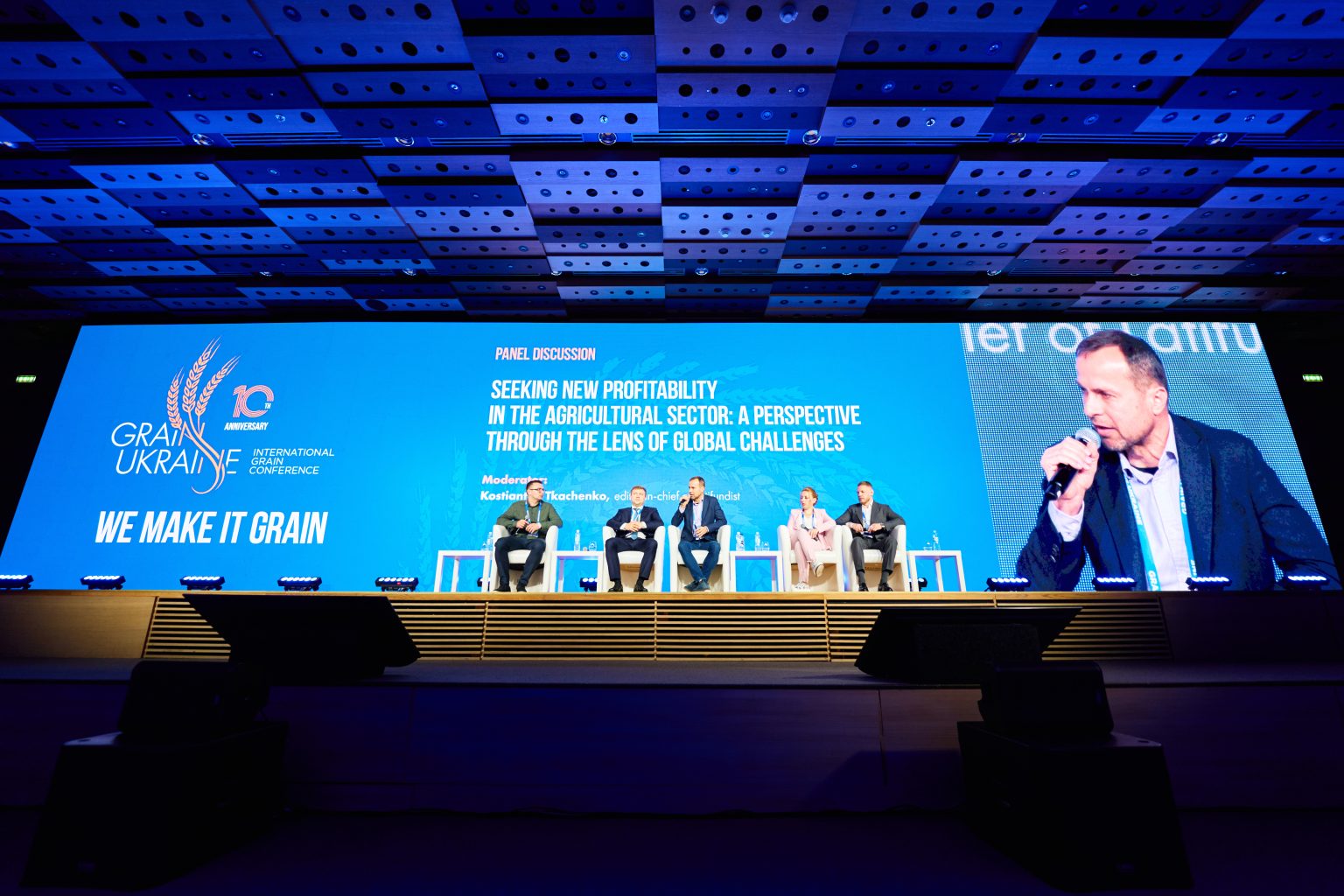
Krogman also emphasized the need to revise the taxation system in the agricultural sector, taking into account European standards. In particular, he called the absence of income tax within the simplified system a negative signal for European partners, where such a tax is a common practice.
In addition to the war, climate change and crop migration are added. Oleg Zapletnyuk, CEO of TAS Agro, reminded: “The climate will not roll back, and agribusiness must get used to the new landscape. Sunflower has already “moved” to the west. What was common in Mykolaiv region five years ago is now typical for Vinnytsia region: heat, unstable precipitation, moisture deficit. This is not an exception, but a trend. We have already adapted – we switched to strip-till technology, which allows us to use moisture and resources more efficiently: people, equipment, time. “
Svitlana Nikityuk, head of the agricultural department of Epicenter K, emphasized diversification in response to military risks and climate change: “More than 20% of our employees are now in the Armed Forces of Ukraine. We are updating equipment, introducing precision seeders, and planning an industrial park. This is not a separate project, but a response to the vulnerabilities of the system. Working on internal efficiency is the only way to a stable margin.”
Agribusiness under pressure from global changes
Operating the market in the face of macroeconomic challenges and geopolitical instability is a significant challenge, as agribusiness cannot exist in a vacuum. Understanding macro trends is essential for survival and growth in 2025. Jonathan Grange, Partner at Sunstone Brokers, analyzed the macro factors that will impact the grain business in 2025, and noted: “We are witnessing a new Cold War—a geopolitical rivalry between democracies and autocracies that spans trade, technology, military power, and control over regions like the South China Sea and Taiwan. The U.S.’s tariff and protectionist policies are creating turbulence. Rising prices, logistical challenges, and export losses are all already happening and are also affecting the grain trade. Agribusiness is now at the crossroads of global wars, technological breakthroughs, and the struggle for a new world order.”
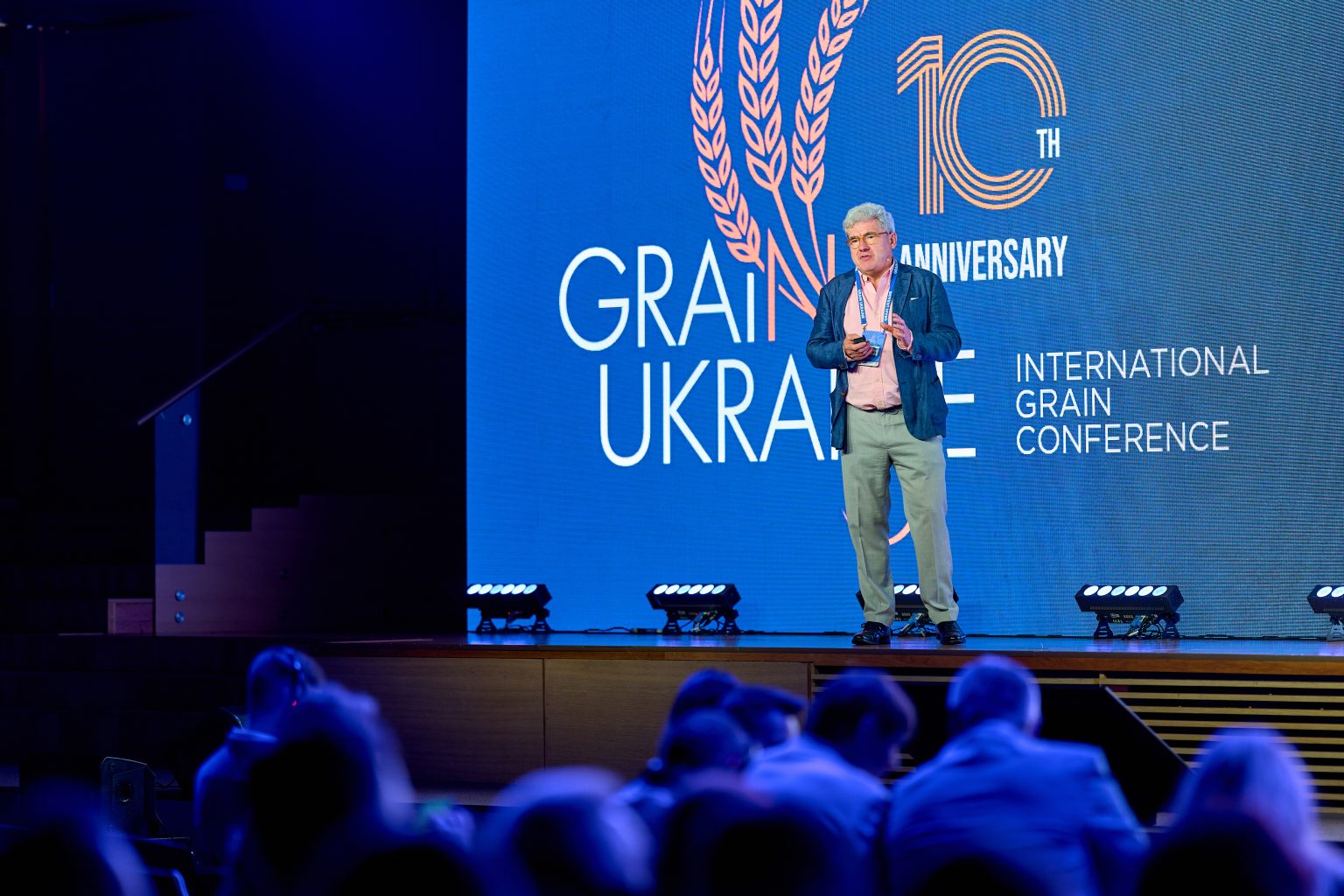
Priscilla Toffano, the International Monetary Fund’s Resident Representative in Ukraine, stressed that in addition to global challenges, the war poses unique risks for every Ukrainian household. “It has become more difficult for agricultural producers to obtain financing and export their products due to internal restrictions and the blocking of the grain corridor,” Ms. Tofano noted.
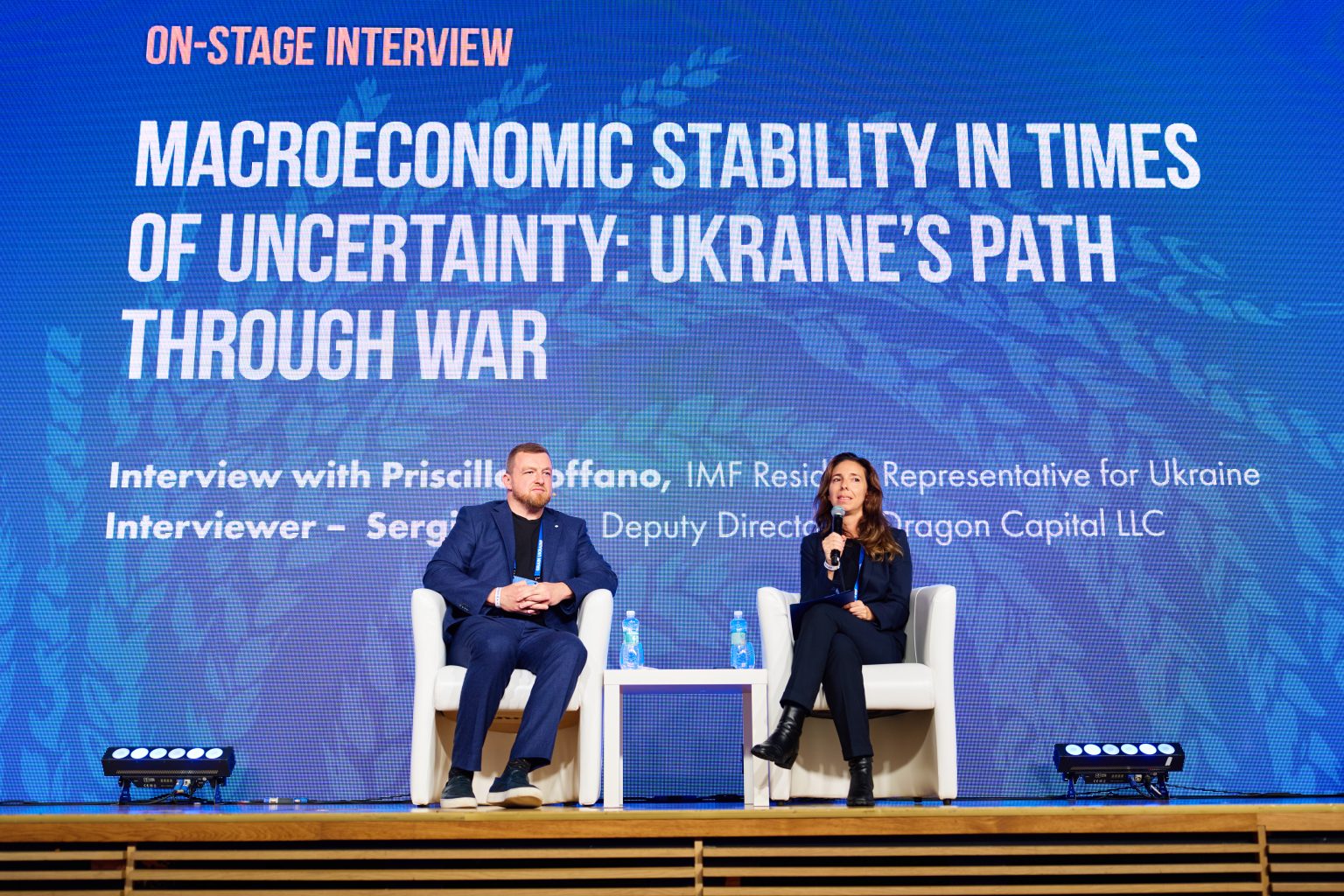
Despite this, she reassured that the IMF would remain with our country. In her opinion, the solution lies in strengthening export potential. The agricultural sector, which generates 60% of exports and employs 15% of Ukrainians, remains a strategic pillar of the economy.
Vitaliy Koval, Minister of Agrarian Policy and Food of Ukraine, noted the need to rethink the structure of agricultural imports. “Ukraine has not only export potential, but also domestic niches, in particular, in the production of vegetables, a significant share of which is imported. We need to look for margins not only in foreign markets, but also within the country,” the minister noted.
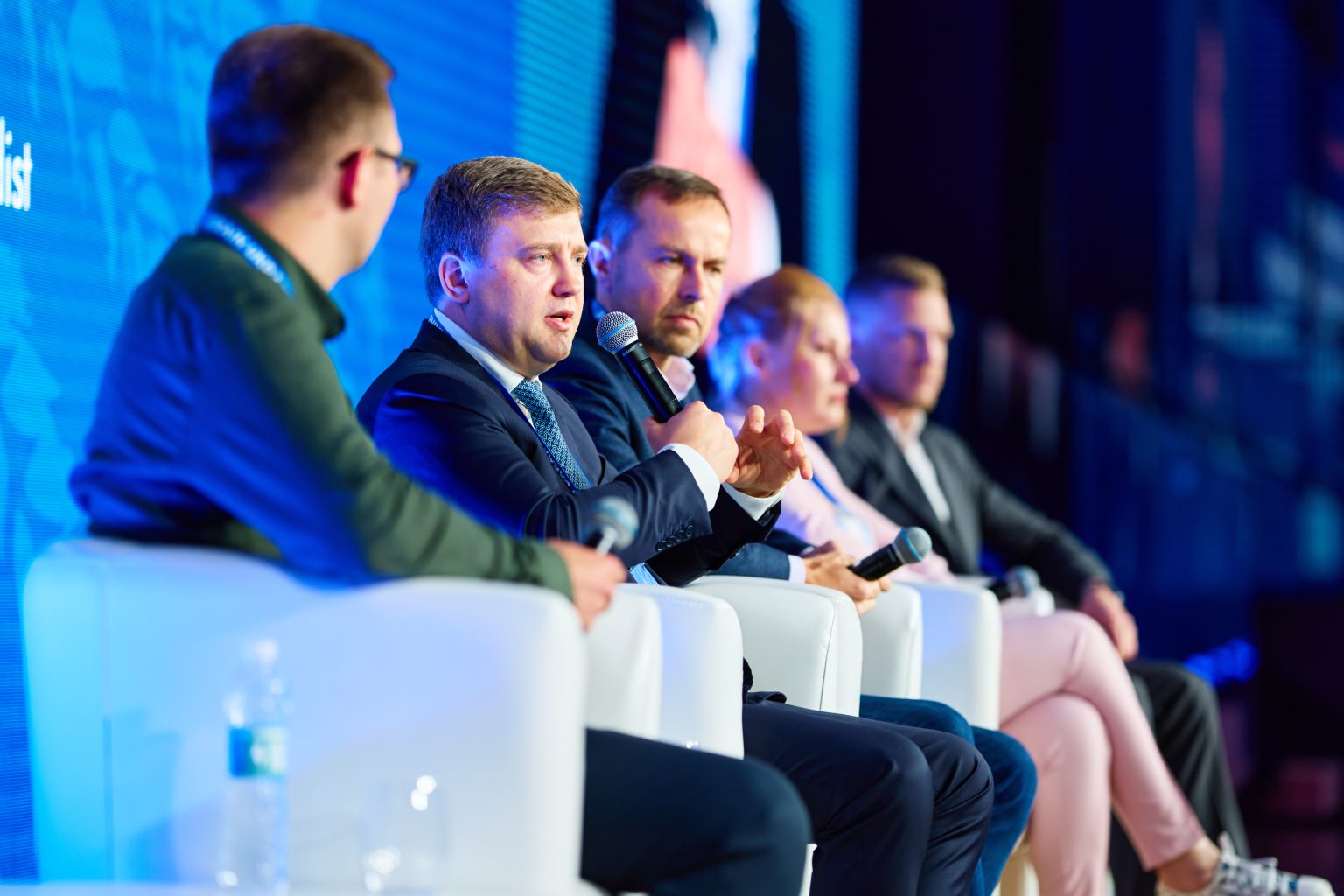
Terrell Lee, chief expert of the silage product line FAMSUN, emphasized the importance of a clear operational architecture and building effective export chains: “Modern equipment is not the solution. It is important to streamline the entire logistics chain — from the field to the port. Without this, automation does not work.”
Cooperation instead of competition
Working through cooperation instead of competition was discussed during a panel discussion moderated by Kateryna Konashchuk, a partner at Trend&Hedge Club. She noted that as of the end of 2024, more than 3,000 cooperatives were registered in Ukraine, but they face prejudices, imperfect laws, and high taxes.

Oleksandr Golovin, Commercial Director for Ukraine at Kernel, is convinced that we cannot do without support and cooperation: “Our goal is for farmers to grow efficiently and prices to be fair. We are looking for growth points within the country through technology. Because the more successful the producer, the more loaded our infrastructure, the more grain the country produces.”
Yuriy Skichko, Director of Hermes-Trading, Director of Development and Investments at AGROVISTA Holding, added: “Unification is what helped us survive during the war. Through cooperation, we better manage risks, expand opportunities, and open new horizons.”
Sales strategies – a test of adaptability
After all, talking about margins always leads to the main question – implementation. How and where to sell grain? Viktoriya Blazhko, Head of Editorial Content and Analytics at ASAP Agri, noted: “Ukrainian wheat and corn in the 2023/2024 marketing season reached almost pre-war export geography, covering 70 countries. Despite trade barriers, competition with the EU, the US and Brazil, Ukraine maintains its positions in the markets of North Africa, Southeast Asia and Turkey, which has again become a key importer. The role of Pakistan and Algeria is growing, while the EU limits access with quotas. Demand for corn has returned faster than expected, but changed prices and the preferences of American suppliers require flexibility. The 2025/2026 season will be a test of adaptability: success will depend on the ability to quickly respond to changing market conditions and policies.”
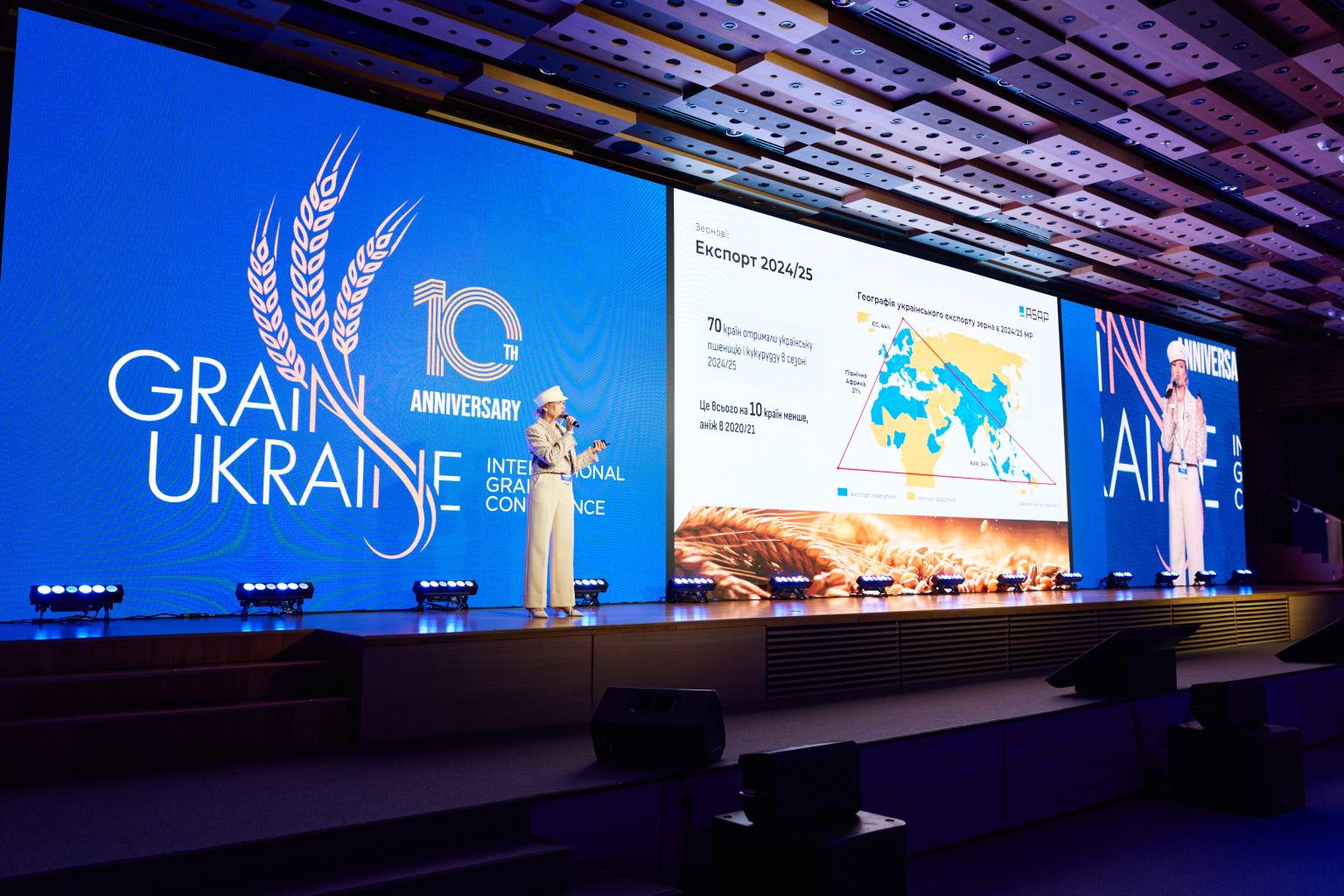
The new reality of logistics
Next, logistics, which is a determining factor for the entire sphere, makes its move on the chessboard. Maintaining margins in logistics in conditions of war, blocked ports and changes in demand was the main topic of discussion at the panel discussion moderated by Mykola Gorbachev, President of the Ukrainian Grain Association. “The margin will be where the leaders appear — those who will offer not cheaper, but different,” emphasized Mr. Gorbachev.

The market has changed, and the models of 2022–2023 no longer work. Companies have moved from a “seller’s market” to a “buyer’s market,” and it is its pains that determine their strategy. In these conditions, it is extremely important not only to maintain flexibility, but also to ensure stability for customers.
Oleksandr Ivashyna, Director of Logistics at Bunge Ukraine, noted: “Restrictions on exports through ports have become one of the most powerful challenges for us. The first months were the hardest: we learned to reorganize processes and models. In today’s reality, you can’t afford to work only along one route – plan B has long since become plan A. We have to constantly keep our finger on the pulse, adapt quickly, and carefully approach the choice of partners – not only the price is important, but also the stability and quality of service. Planning has become short: from one day to four weeks.
Oilseeds: new balances on the world market
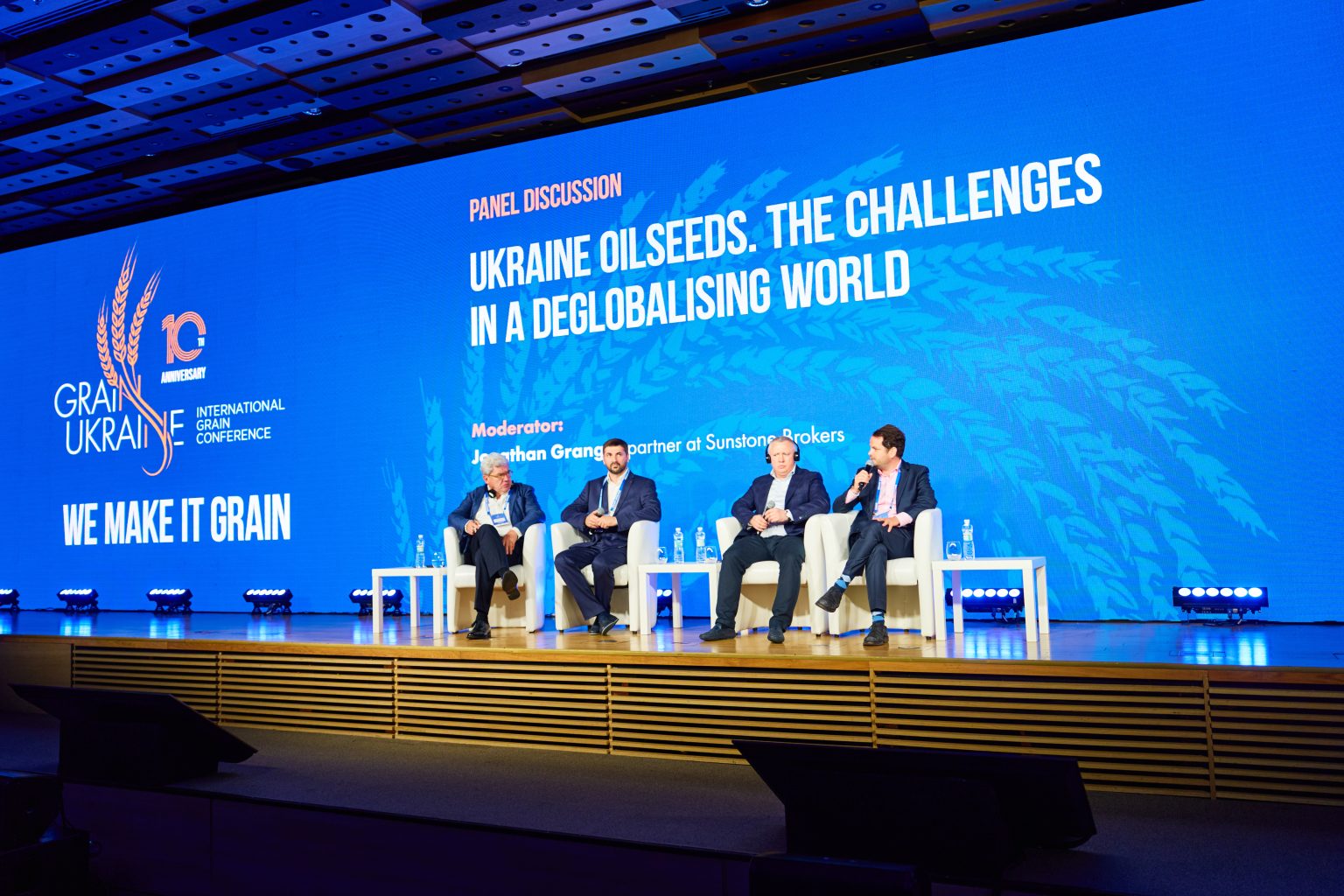
Grain Ukraine did not miss the topic of oilseeds. The world oilseeds market in 2025 is going through a systemic transformation: production growth is slowing down, and the old price balances no longer work. “Soybean and palm oil are no longer the “perfect pair” that has shaped the market for the past 30 years. The slowdown in palm oil production opens a window of opportunity for Ukrainian sunflower and rapeseed. At the same time, record world soybean stocks (122 million tons) and the risk of oversupply from the Black Sea region (Ukraine, Romania, Bulgaria) are putting pressure on prices. Rapeseed margins are supported by a deficit in Canada and Australia, but exports from Ukraine are limited by logistical difficulties and low competition in the EU and Asia,” Thomas Mielke, editor-in-chief of OIL WORLD, CEO of ISTA Mielke GmbH, emphasized in his online speech.
The European vector and integration challenges
The topic of entering the EU markets and deeper integration of Ukrainian producers into the European space was raised in almost every panel discussion and in the speeches of the speakers. Ukraine is already among the five largest exporters of many basic crops to Europe and undoubtedly has the potential to strengthen its competitiveness. That is why European investors are actively investing in the Ukrainian agricultural sector. At the same time, the European market puts forward many specific requirements that need to be taken into account. Iain Dykes, CEO of JTZE Horní Moštěnice s.r.o., noted: “We must understand that the goal of the common agricultural policy is the stability of food supply, the stability of the development of agricultural regions and also the protection of the environment. And even within this framework there are contradictions between the goals, which makes the policy complex if it is extended to the entire EU.”

This is especially important in the context of the implementation of the EUDR (European Regulation against Deforestation). Although Ukrainian farmers have been preparing for the new rules since last year, there are many questions that still concern companies. These are about the unified digital infrastructure, the opportunities for small and medium-sized farmers to confirm that the grain was harvested in an area that was not cut down, and the legal component of this process. The participants in the panel discussion of Oksana Prosolenko, founder and head of the company I.P. Cert, sought answers to these questions, who concluded: “The essence of EUDR is not only about combating deforestation by farmers. It is about transparency and traceability of supplies and about trust in Ukrainian products, in particular soybeans. And right now we have to show that we can maximally involve all market players in this process, that Ukrainian farmers have become a competitor to all producers.” It is precisely transparency and trust that are the determining factors for the sustainable development and systematic work of a Ukrainian farmer in the European market. Bjoern Stendel, CEO of Getreide AG Ukraine, emphasized the advantages of the European market, as well as its rather strict requirements: “The EU is not just an opportunity. These are specific requirements. You cannot export products if they contain residues of prohibited substances. We systematically work with manufacturers to help them adapt to these rules — not declaratively, but practically. Because these rules are a reality that we must grow up to.”
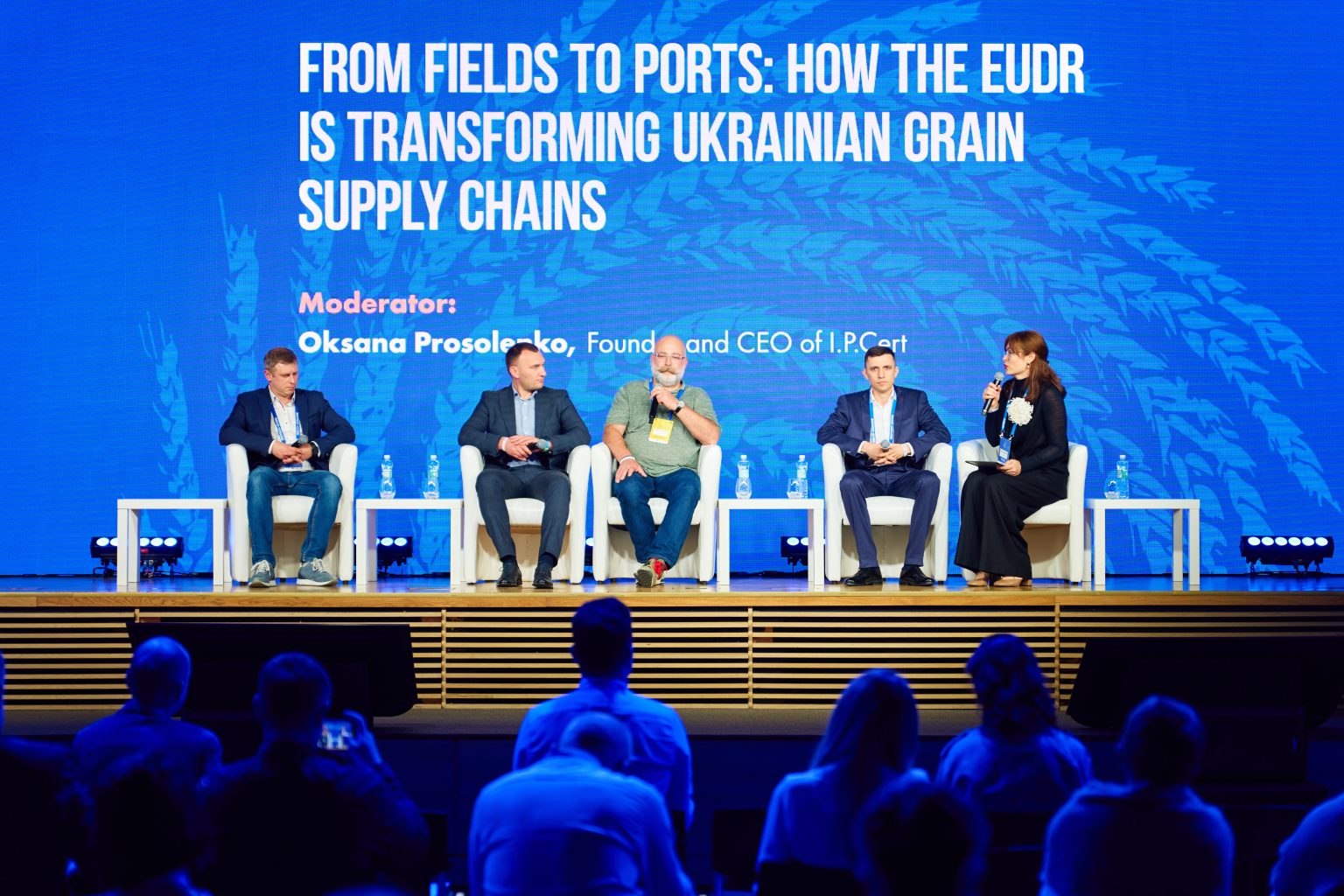
Investing in agriculture: how to look for opportunities during war
The driver of any business development is investment, and the issue of finding funds for new projects in the agricultural sector was discussed at a panel discussion moderated by Svitlana Omelchenko, CFO of Agromino. She reminded that despite the war, companies should look for opportunities for growth — even in difficult conditions.
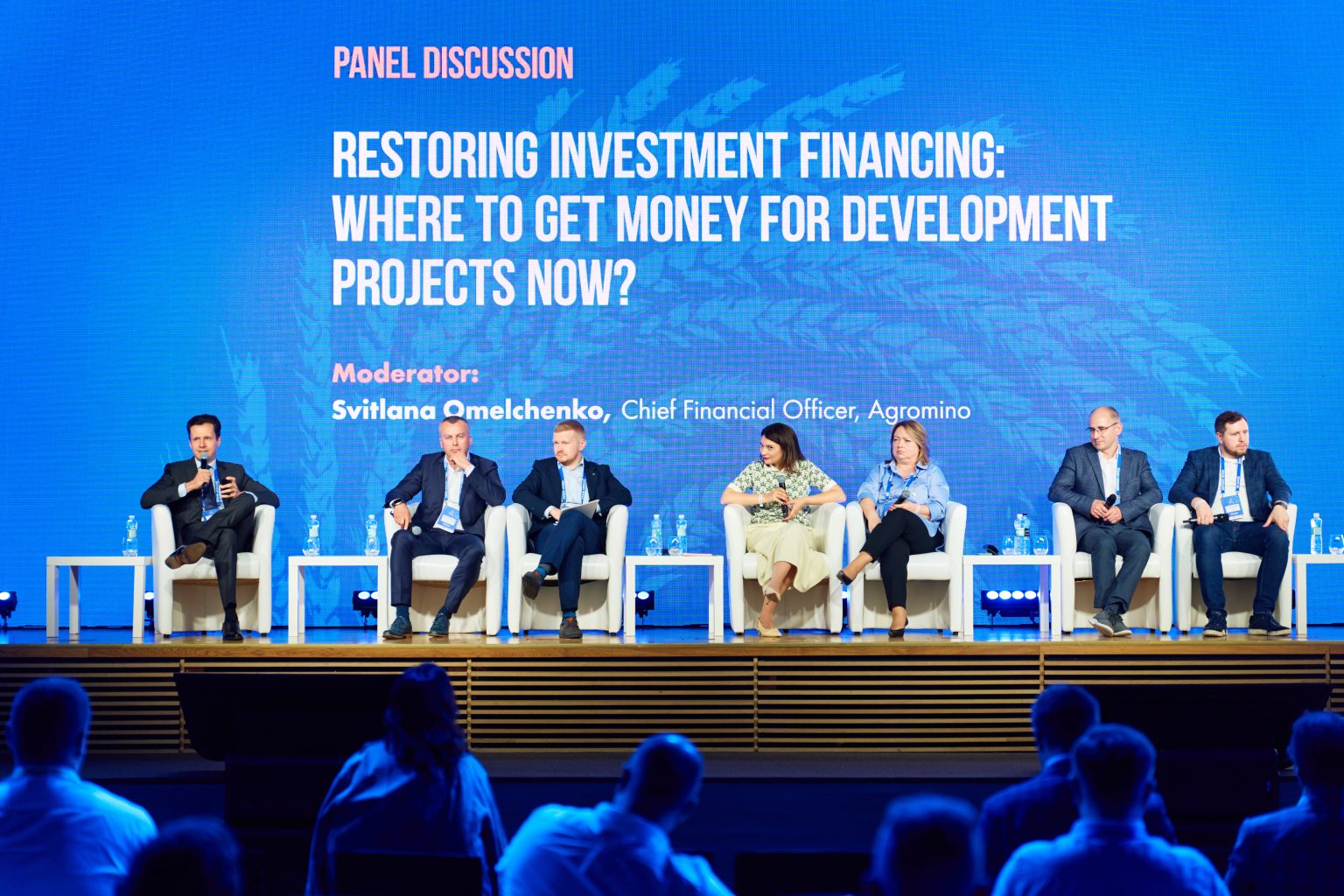
Deputy Minister of Economy Andriy Telyupa emphasized: “The prospects for raw material exports are limited — Ukraine must switch to value-added products, in particular in agroprocessing. The EU is already allocating funds to support this area, IFC declares its readiness to invest up to 5 billion euros. At the same time, the state is reforming the “Affordable Loans 5-7-9%” program to better meet investment needs.”
In addition, he reminded of another tool — equity. In times of war, one should not rely solely on debt mechanisms.
The participants of the discussion agreed that not only the agricultural sector but also approaches to financing need transformation. Alla Biniashvili, a member of the board of OTP Bank, emphasized: “Many companies are already investing now — especially in storage, logistics, processing and energy efficiency. But deals for amounts exceeding $15 million are rare. To grow demand, stability is needed: currency, insurance mechanisms, access to capital.”
Andriy Moiseenko, Director of the Corporate Business Department of the Private Sector at Ukreximbank, emphasized the importance of increasing the efficiency of processes on the part of the banks themselves. One of the barriers to development is the excessively long credit cycle, which in some places reaches 3–4 months, so simplifying procedures should become the new standard.
The main conclusion of the conference is that marginality is possible. But it does not arise by itself. It requires efficiency, cooperation, adaptation, technologies — and a deep understanding of the new reality in which the Ukrainian agricultural sector operates.

The organizer of the event is IdeasFirst. General partners are Atria Brokers, Ukreximbank and Famsun. The partners of the annual conference were the investment company SD Capital and the TIS terminal group, the content partner of the conference is Trend & Hedge Club.
The Grain Ukraine 2025 evening program was dedicated to the 10th anniversary of the event. The partner of the evening program was the French sparkling wine Mer de Glace – a passion for adventures inspired by nature. During the event, a charity fundraiser was also held for the Superhumans Center, thanks to which it was possible to collect more than 100 thousand hryvnias for the rehabilitation of the center’s patients.
The GRAIN UKRAINE conference is an international industry platform for dialogue between the largest representatives of the agricultural market, heads of agri-food companies, commercial and investment banks, as well as technological trendsetters in the agricultural sector, which has existed since 2016. The latest trends in the agricultural market are discussed here, as well as the development of sustainable business models and the implementation of technological agricultural innovations.

